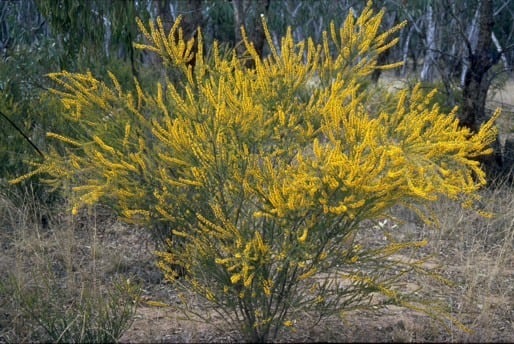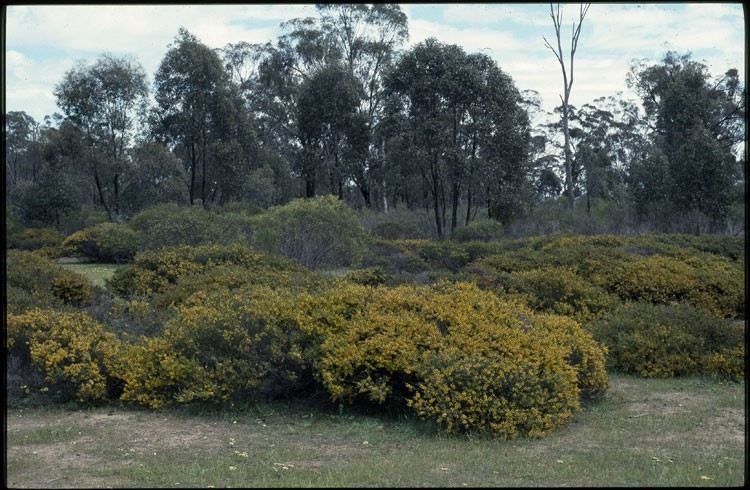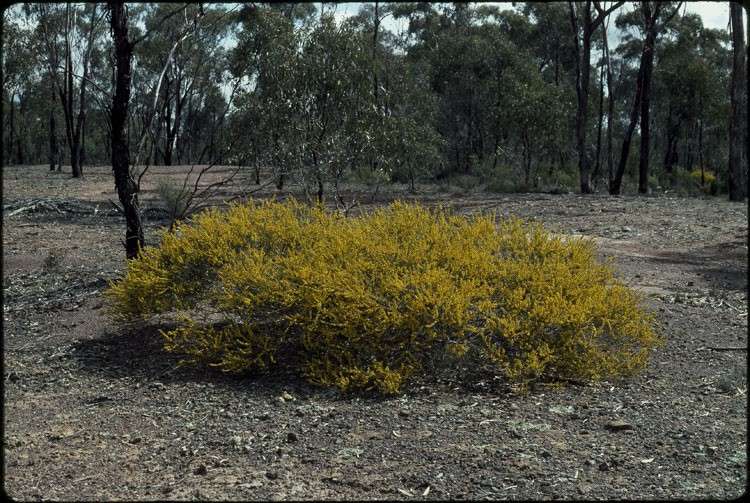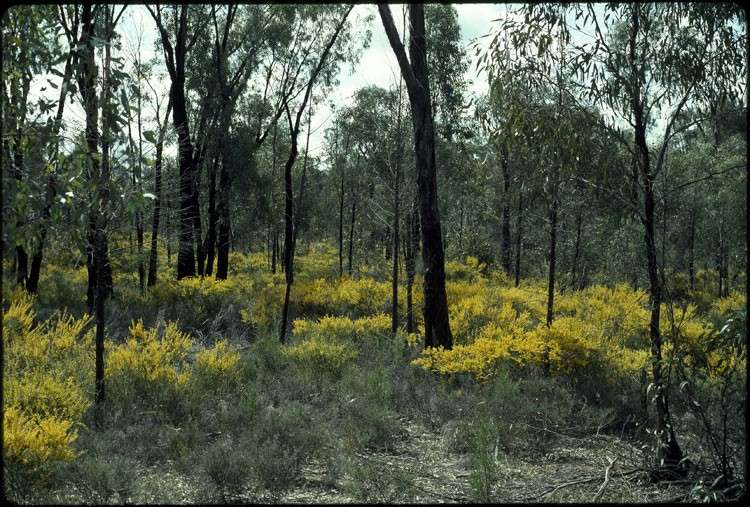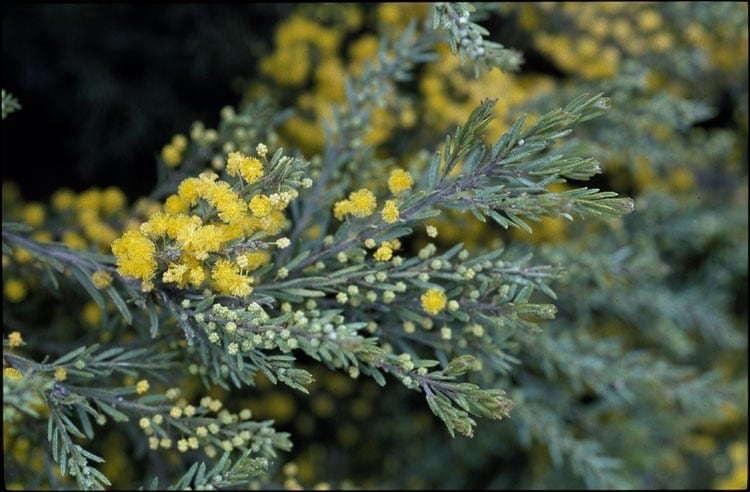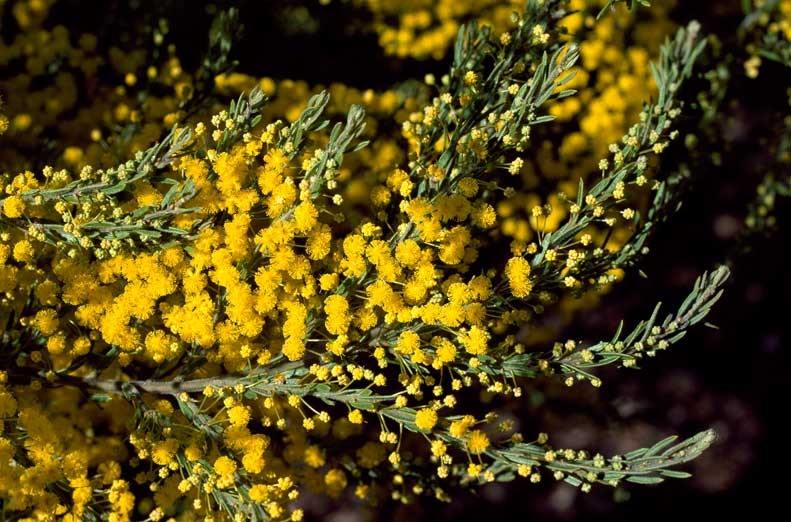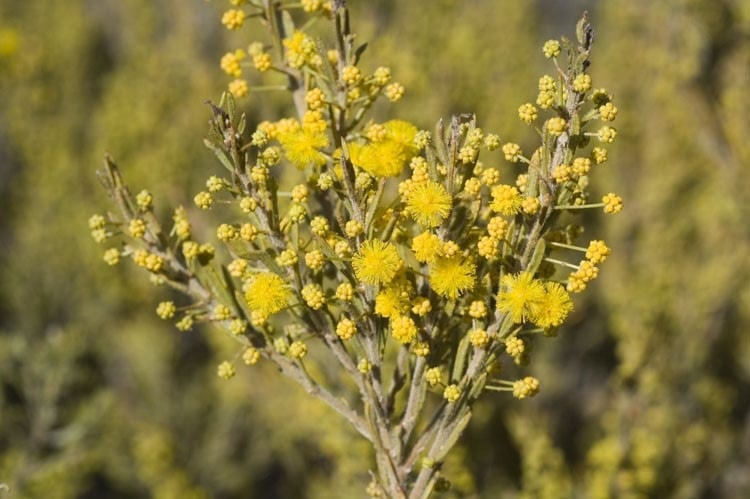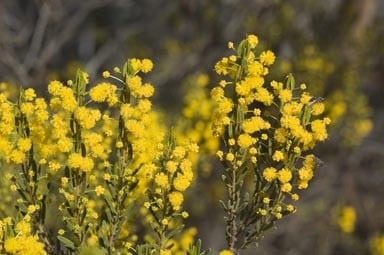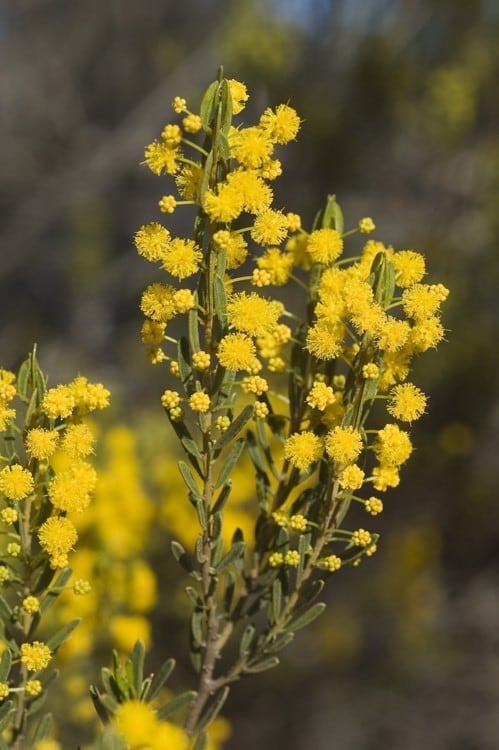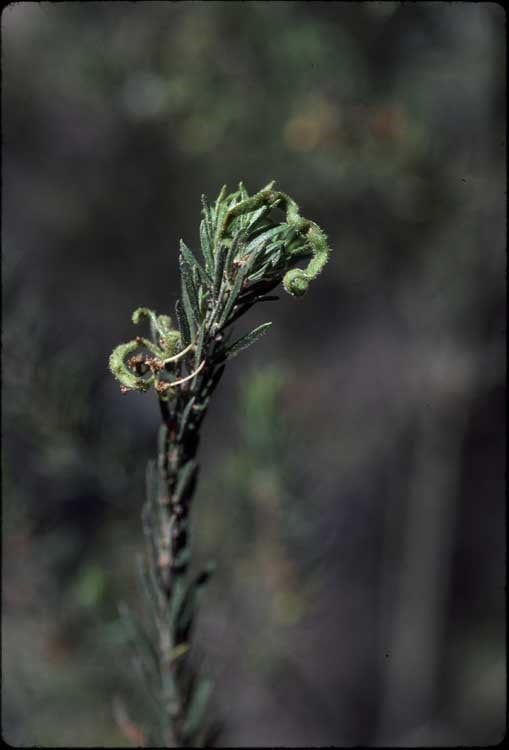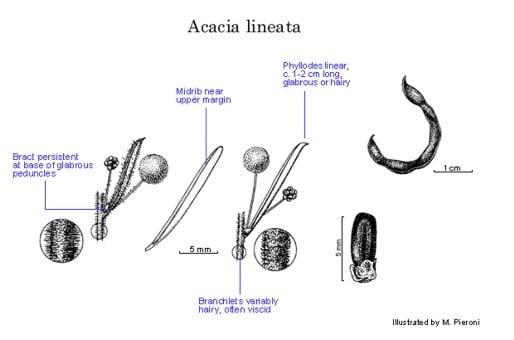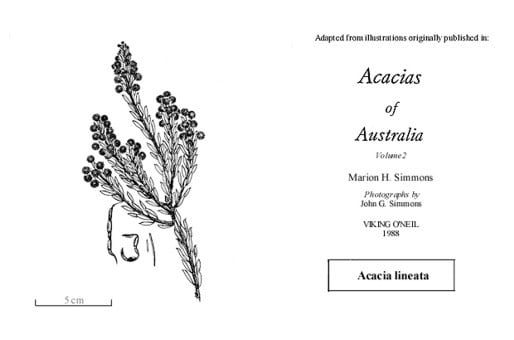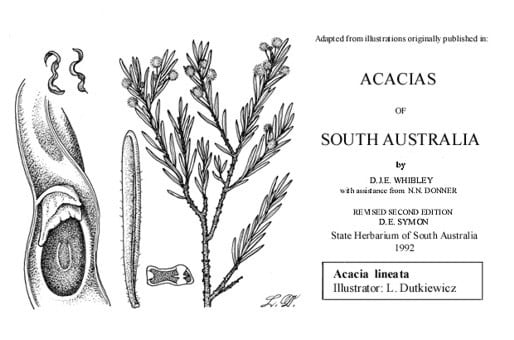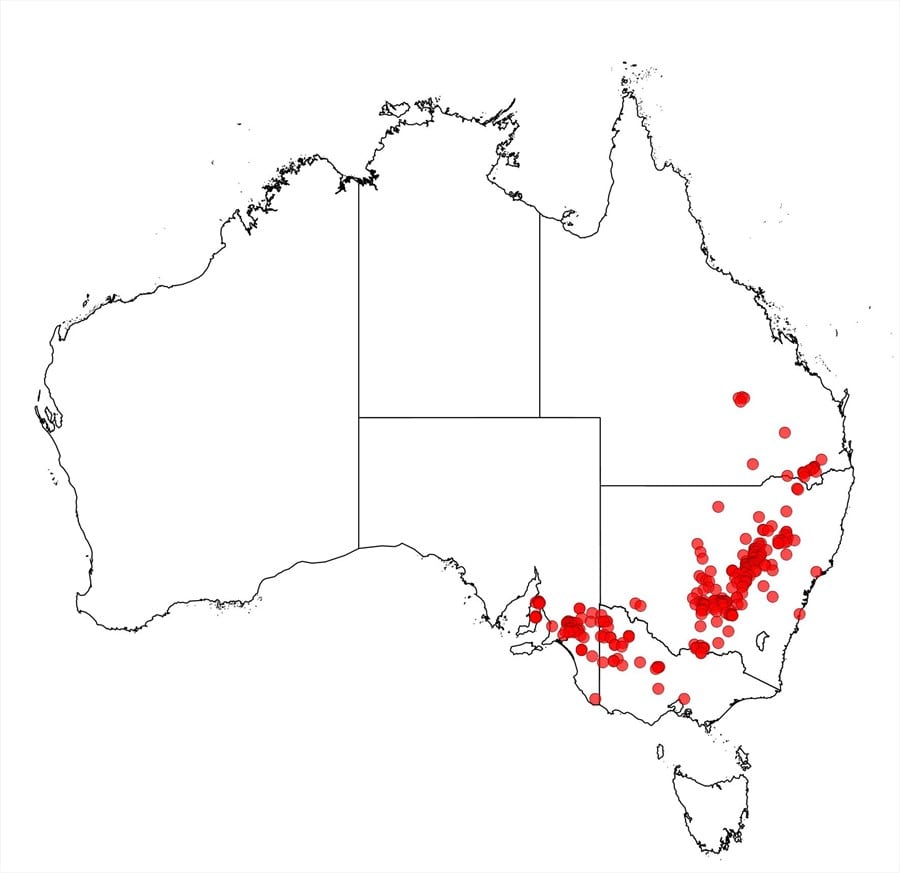Acacia lineata A.Cunn. ex G.Don
WATTLE
Acacias of Australia
Common Name
Streaked Wattle, Narrow Lined-leaved Acacia
Family
Fabaceae
Distribution
Scattered from Eyre Peninsula, near Cowell, S.A., through NW Vic. and N.S.W., to near Carnarvon Ra., Qld.
Description
Bushy spreading shrub to 2 m high. Branchlets ±terete, often viscid, with indumentum variable and sparse to dense. Phyllodes somewhat crowded, ascending to erect, normally ±narrowly oblong, 7–20 mm long, (0.5–) 1–2.5 mm wide, often obliquely mucronate, sometimes subuncinate, glabrous to hairy; abaxial margin resinous; midrib resinous, close to adaxial margin and occasionally confluent with it near the apex (rarely central); gland not prominent, normally 1–2 mm above pulvinus. Inflorescences simple, 1 or 2 per axil; peduncles 5–12 mm long, slender, normally glabrous; basal bract persistent; heads prolific, globular, 10–18-flowered, golden. Flowers 5-merous; calyx irregularly united, with lobes sometimes ±free. Pods curved to ±irregularly undulate or twisted, to 5 cm long, 2–4 mm wide, firmly chartaceous to thinly coriaceous, glabrous and viscid, sometimes glandular-hairy. Seeds longitudinal, oblong, 3–5 mm long, slightly shiny, brown; aril terminal.
Habitat
Grows in a variety of habitats but often in mallee communities.
Specimens
S.A.: road from Cowell to Mangalo, D.N.Kraehenbuehl 5046 (AD); c. 8 km NE of Paskeville on the Northern Yorke Peninsula, B.Copley 3050 (PERTH). Qld: Carnarvon [Stn], G.L.Walsh 239 (BRI). N.S.W.: Parkes, Oct. 1906, J.L.Boorman (NSW). Vic.: Wyperfeld Natl Park, A.C.Beauglehole 28287 (MEL).
Notes
G.Bentham, Fl. Austral. 2: 354 (1864), erroneously treated A. imbricata as synonymous with A. lineata. This species is easily distinguished from A. lineata which has angled, glabrous, non-viscid branchlets and gland-bearing phyllode apices.
J.H.Maiden, J. & Proc. Roy. Soc. New South Wales 49: 496–499 (1916), discussed variation within A. lineata. He recognised 5 Groups which ‘run into each other a good deal’. Group 1 was later described as A. centrinervia which is provisionally recognized here, distinguished primarily by its central phyllode midrib and puberulous peduncles. Future studies may reveal a basis for dividing the complex variation patterns into discrete taxa; indumentum characters may prove useful in discriminating taxa. The status of A. centrinervia should be reassessed in the light of such studies.
Related to A. flexifolia. May superficially resemble A. conferta or A. mariae in phyllode shape and size but the relationship is not close. These two non-viscid species together have pods 8–15 mm wide, transverse seeds, peduncles ebracteate at base, 20–38-flowered heads, and obscure or absent phyllode midribs.
FOA Reference
Data derived from Flora of Australia Volumes 11A (2001), 11B (2001) and 12 (1998), products of ABRS, ©Commonwealth of Australia
Author
Minor edits by B.R.Maslin & J.Rogers
B.R.Maslin
This identification key and fact sheets are available as a mobile application:
URL: https://apps.lucidcentral.org/wattle/
© Copyright 2018. All rights reserved.

